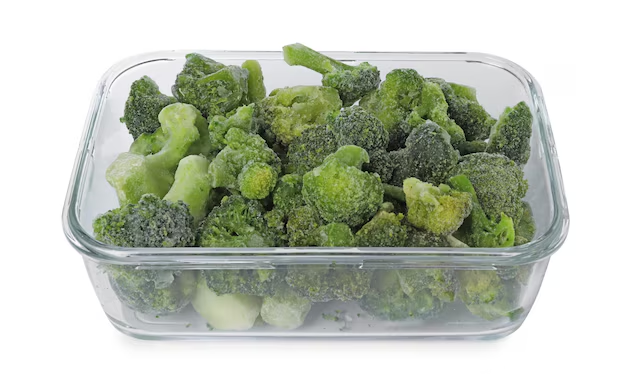The Ultimate Guide to Storing Broccoli in Your Refrigerator
Picture this: you’ve just returned from your weekly grocery haul, bags packed with fresh, vibrant vegetables. Among them is broccoli, verdant and crisp, promising delicious and nutritious meals. But as days pass, questions arise: How long can you keep broccoli in the refrigerator before it loses its charm? From this query sprouts a crucial conversation about maximizing the shelf life of broccoli to save money, reduce waste, and savor its wholesome goodness.
Understanding Broccoli's Shelf Life 🥦
Broccoli is a versatile vegetable, celebrated for its nutritional benefits, including a wealth of vitamins, minerals, and antioxidants. Yet, despite its robust nature, broccoli is a perishable item, requiring proper storage to maintain freshness.
Typical Storage Duration
On average, fresh broccoli stored in the refrigerator lasts between 3 to 5 days. This period can vary depending on several factors, including the initial freshness when purchased and the storage conditions. Broccoli's shelf life can sometimes extend slightly longer if kept in optimal conditions but monitoring for signs of spoilage is crucial.
Factors Affecting Shelf Life
- Humidity: Broccoli thrives in a slightly humid environment, preventing it from drying out.
- Temperature: Keeping broccoli at a consistent, cool temperature around 32°F to 36°F extends its shelf life.
- Air Exposure: Excess air can accelerate the degradation process and should be minimized.
Best Practices for Storing Broccoli
The key to preserving broccoli lies in attentive handling and smart storage techniques. Here's how you can optimize the shelf life of your broccoli:
Choosing the Freshest Broccoli
Always start with the freshest broccoli available:
- Look for firm, dark green florets without yellowing or wilting.
- Inspect the stems; they should be thick and firm, not rubbery or slimy.
- Check for pests – small holes in leaves may indicate their presence.
Bringing home the freshest broccoli sets the foundation for a longer shelf life, significantly impacting the storage duration.
Preparing Broccoli for Refrigeration
Before storing broccoli in the refrigerator:
- Do not wash it; moisture can lead to mold growth. Clean only before use.
- Trim the stems slightly if needed, preserving their crispness.
Ideal Storage Methods
- Loose Storage: Leave broccoli unwrapped on a refrigerator shelf. This allows for natural air circulation but may lead to faster drying.
- Produce Bag with Perforations: For those who prefer covering their vegetables, place broccoli in a perforated plastic or breathable mesh bag. This method strikes a balance between humidity retention and air circulation.
- Stalk-Trimming Method: Trim the stalk of the broccoli and store it upright in a jar of water, similar to cut flowers. This helps maintain moisture and freshness.
Signs Your Broccoli Has Seen Better Days
Understanding the tell-tale signs of spoilage is essential to avoid consuming inedible or potentially harmful broccoli:
- Yellowing Florets: Fresh green florets turn yellow as broccoli ages, signaling a decrease in quality.
- Wilted or Slimy Stems: These changes indicate the onset of spoilage.
- Off Smells: A rotten, sulfur-like odor means it's time to discard the vegetable.
Quick Check: Broccoli Spoilage Signs 🚨
- 🟢 Fresh: Dark green, firm, earthy smell.
- 🟡 Aging: Slight yellowing, mild softness, faint smell.
- 🔴 Spoiled: Significant yellowing, wilted/slimy, strong odor.
Enhancing Broccoli's Longevity
If you’re looking to make your broccoli last even longer beyond refrigerator storage times, consider these techniques:
Freezing Broccoli
Freezing is an excellent option for prolonging the shelf life of broccoli while retaining much of its nutrient value:
- Blanching: Briefly boil broccoli for 2-3 minutes, then plunge it into an ice bath. This process preserves color and texture.
- Freezer-Ready Packaging: Pat dry the blanched broccoli, pack in airtight containers or freezer bags, and freeze.
Frozen broccoli typically lasts for 6 to 8 months and is perfect for cooked dishes and smoothies.
Pickling Broccoli
For those with a penchant for tangy flavors, pickling offers an intriguing way to preserve broccoli:
- Simple Brine: Combine water, vinegar, and seasonings such as herbs, garlic, or red pepper flakes.
- Refrigerate: Pour over broccoli in a jar, seal, and refrigerate. Pickled broccoli can last several weeks while offering a unique taste experience.
Sustainable Consumption and Waste Reduction
Reducing food waste not only helps the environment but also saves you money. Here are ways to optimize broccoli usage:
- Meal Planning: Incorporate broccoli into weekly meal plans to ensure timely consumption.
- Creative Cooking: Use leftover broccoli to create soups, stir-fries, or even blended into smoothies for an extra nutrient kick.
- Composting: If broccoli does spoil, consider composting as an eco-friendly disposal method.
Keeping Broccoli Fresh: A Recap 🌟
Here's a quick reference to ensure your broccoli remains fresh as long as possible:
- Purchase Fresh: Select firm, dark green broccoli.
- Storage Prep: Avoid washing before storage; trim if needed.
- Ideal Temperature: Store between 32°F and 36°F in the refrigerator.
- Choose a Method: Opt for loose, bagged, or jar storage.
- Spot Spoilage: Be vigilant for yellowing, slime, or odors.
- Extend Shelf Life: Consider freezing or pickling excess broccoli.
In conclusion, understanding broccoli's nuances and dedicated storage methods can keep this beloved vegetable fresh and ready for your favorite dishes. Whether you’re making a hearty broccoli cheddar soup or a simple side, knowing the best practices will enable you to make the most of this nutrient-rich vegetable. Enjoy the vibrant flavors and health benefits broccoli brings to your table, without the stress of unnecessary waste.
